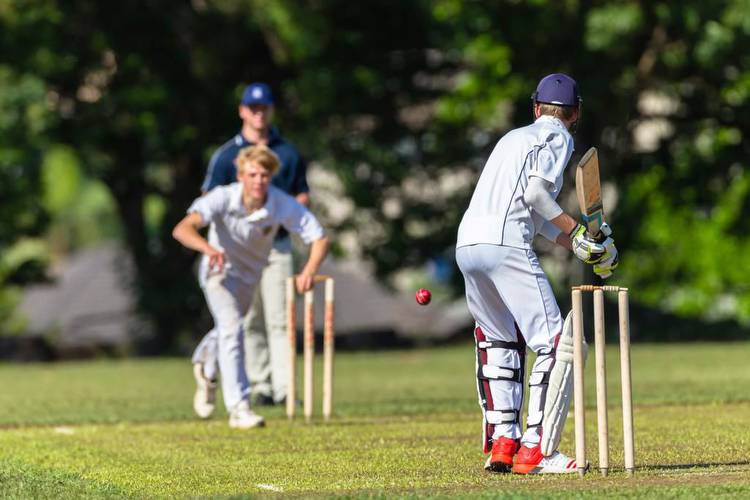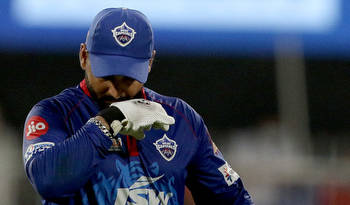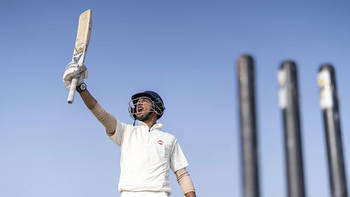Mastering Cricket Handicap Betting: Unleashing Value In Test, ODI, And T20 Matches

Last Update on: May 8th, 2023 at 04:10 pm
Cricket is among the most-played sports in the world, with India, Bangladesh, and Pakistan leading in popularity. The sport continues to spread globally, with the cricket equipment market share likely to reach over USD$897 million by 2029.
As a sport loved by millions of fans worldwide, cricket offers many exciting matches, from Test cricket to One Day Internationals (ODIs) and Twenty20 (T20) games.
For those who want to spice up their cricket-watching experience, betting on matches can be pretty thrilling. Let’s explore cricket handicap betting together and see how it can help you find value across all game formats.
But first, here is an overview of the basics:
Introduction to cricket
The roots of this sport date back to England in the 16 century, making it one of the oldest in the industry. Today, it’s popular in Australia, South Asia, New Zealand, and the Caribbean.
It involves 22 players (two teams of eleven members) playing against each other on a 22-yard-long oval pitch. One side bats the ball while the other fields and throws (bowls) it.
The objective is to score as many runs as possible while preventing the opponent from doing so. But how do the regulators award a run?
It begins with the batsman hitting the ball. They then run to the opposite end of the pitch, touching the crease with their bat. They must do this before the fielding team can throw the ball back to the wicketkeeper or a fielder standing next to the wickets.
A score is recorded if the batters complete the run. Four are awarded if the ball travels to the boundary without being caught, and six if it crosses the border without bouncing.
Cricket terms and concepts
Some of the main terms you’ll come across in a cricket match include:
- Bat: A piece of wood a batsman uses to hit the ball.
- Ball: A hard leather ball that is used in cricket.
- Wicket: The structure consists of three stumps and two bails. The fielding team defends the wicket, and the batsman aims to hit the ball and score runs by running to the opposite end of the pitch.
- Innings: A team’s turn to bat.
- Over: A set of six deliveries bowled by a bowler.
- Run: A score achieved by the batsman.
- Boundary: The edge of the cricket field. If the ball crosses the border after being hit by the batsman, the batting team scores four or six runs, depending on whether the ball bounces before crossing the boundary.
- Fielder: A member of the team that is defending the wicket.
- Bowler: A player who delivers the ball to the batsman.
- Umpire: An official who oversees the game and decides whether a batter is out, whether a delivery is legal, and other aspects of the game.
- Out: When a batsman is dismissed from the game by the fielding team.
- Extras: Runs scored by the batting team that are not credited to any individual batsman, such as penalties for the fielding team’s misconduct.
The three formats of this sport are Test matches, One-Day Internationals (ODI), and Twenty20 Internationals (T20). What’s the difference?
- A test match is the most extended format of cricket, which can last up to five days. Each team gets two innings to bat, and the team that scores the most runs over both innings wins the match. It’s probably the most challenging and traditional form of cricket.
- ODI cricket has a limited number of overs, typically 50 overs per side. The match is completed in a single day, with each team getting one inning to bat.
- T20 is the most fast-paced and shortest format of the three. Each side faces a maximum of 20 overs within three hours, with the top-scoring team in their allotted overs winning the match.
Generally, this sport is quite complicated, especially for new fans and prospective bettors. It’s been voted as one of the world’s most confusing sports. As such, many gamblers avoid it in their betting escapades as they struggle to understand the rules.
For instance, cricket handicap betting can be a bit daunting for beginners. But as you delve deeper into the world of sports betting, you’ll find plenty of resources available to help you learn the ropes.
Explore various handicap betting strategies and look for tips that can be applied across multiple sports, including cricket, to broaden your betting capabilities.
By familiarising yourself with these concepts, you’ll be well-prepared to tackle cricket handicap betting and make the most of its opportunities.
Understanding cricket handicap betting
Handicap betting involves giving one selection a “handicap” to overcome for your bet to win. In other words, you’re offering the weaker team an advantage before the match begins. It’s a popular aspect in the world of sports gambling.
But what does it mean in cricket? A bookmaker assigns a point spread to a team or player to level the playing field. For instance, consider a test match between India and Australia where you give the former a handicap of +2.5 runs.
In such a scenario, India is starting the match with a virtual score of 2.5 runs. You can back either of the teams to win with this handicap on.
If you bet on India, then the team must lose by at most two runs for you to win the prize. If Australia beats India by three runs or more, the advantage will be gone, and you’ll lose the bet.
On the other hand, your bet on Australia will be a winning bet if the team wins by three or more runs. Anything less means Australia will have failed to overcome the handicap.
Application of handicap betting in the three formats
You’re probably wondering if this concept is the same across all three cricket formats. The application may differ slightly, but the overall idea is similar.
In Test matches, the handicap may be expressed as a whole number of runs, and the bet may be settled on the result after both innings are over. ODI and T20, often called limited overs, have their handicaps as fractions of runs.
Also, since T20 cricket has a greater probability of higher-scoring matches, there are more variations in handicap betting. But its only difference is that it’ll likely be expressed as a higher number of runs than the Test match format. Also, the bookmaker may settle the bet after completing the first innings only.
Tips for Mastering Handicap Betting in Cricket
Now that you know about the application of handicap betting in a cricket, you might want to try it practically. But how can you master this form of betting and generate as many wins as possible?
The first step to successfully placing a handicap bet on a cricket match is understanding how scores are awarded. As mentioned earlier, this is one of the most confusing sports because of its complicated rules.
But you’ll be on the right track once you understand the basic rules. The next step is to learn various strategies and tactics that teams often employ. Remember, like any sport, every cricket team goes to a match with a plan that counters the opposition’s strengths and takes advantage of the weaknesses.
For instance, teams may use different types of bowlers, such as spinners or change their bowling angles. Also, managers must balance their batting and bowling line-ups during long matches. Doing so ensures that every player is fresh and consistently performs optimally over an extended period.
On the other hand, teams playing ODI matches use tactics that may help them score quickly and efficiently. That’s why these formats are usually high scoring. Learning this information before you start betting will help your decision-making process.
Another essential tip is analysing each team’s recent performances, strengths, and weaknesses. This information can give an edge in predicting the result and placing winning bets.
But why is this bit important in your sports gambling career? First, it’s worth noting that cricket is a team sport. Therefore, the chemistry and communication between the players can significantly impact the overall performance. Knowing how the members interact with each other can give you valuable insight into what to expect from the match.
A team’s strengths and weaknesses can also help you predict which area of the pitch a team will likely dominate. For instance, a side with a solid batting line-up may score high. However, they’ll struggle to defend if their bowling attack is weak. This information can help you decide the best handicap bet on a team’s margin of victory.
Although this is a team sport, the performance of individual players will also have a massive impact. You’ll need to analyse every player’s track record and see which side has the most notable weaknesses. Understanding this will also allow you to place handicap bets on individual player performances like wickets and runs scored.
While at it, you must also consider the head-to-head record between the two teams. Which of the teams has won the most matches, and by what margin? Are there any crucial player injuries? Research this data and make your decisions accordingly.
Identifying value bets before predicting any Test match, ODI, or T20 outcome is one way of becoming a successful gambler. So, what strategies should you use in each format?
Here are the main factors to prioritise when betting on Test matches:
- Consider the pitch conditions. A pitch that offers more assistance to spinners may favour quality spin bowlers. On the other hand, teams with solid-pace attacks will likely benefit from a pitch with more bounce.
- Weather is another essential factor to consider. For instance, rain interruptions can increase the chances of a draw as they make batting difficult.
- The historical performance of teams and players on a particular pitch may also affect the performance. A side winning on a given field may have more confidence going into the match.
If you want to bet on ODI matches, consider the following:
- Assess the team’s form. How many games have they won recently, and by what score?
- Check if there are any critical players with injuries.
- Check the head-to-head records while considering the ground, conditions, and team composition factors.
- Look for value by analysing the odds and determining if the handicap line represents good value. If the line is too high or too low, there may be value in betting on the handicap market.
- Consider external factors such as weather and pitch conditions.
Use the tips below to bet on T20 cricket matches:
- Evaluate the batting and bowling line-ups
- Consider powerplay performances: The powerplay overs (first six overs in T20) can significantly impact the outcome of a T20 match. A team performing well in the powerplay may gain an early advantage and pressure the opposition.
- Look for in-game momentum shifts. For instance, a losing team can quickly turn the tables with a few good overs.
- Analyse value in the handicap line.
- Check possible external factors.
As you can see, the procedures across the three formats are identical. Once you’ve learned the rules, betting on cricket matches will be straightforward.
Risk management strategies
It’s worth noting that even with the tips above, you can still quickly lose your money if you’re not careful. As such, you need proper risk management strategies. So, which plan should you use to prevent unnecessary frustrations?
- Bankroll management: Set a budget a stick to it throughout your betting escapades. A good rule of thumb is to wager less than 2% of your total bankroll per bet.
- Diversify: spread your bets across multiple matches or markets to reduce risk exposure.
- Research and analyse teams and players before placing any bet.
- Control your emotions: remain disciplined and bet based on facts instead of your love for a team.
You should also set limits and monitor your performance throughout the sessions. See how many wins and losses you’ve recorded in recent sessions and adjust your strategies accordingly.
Conclusion
Cricket handicap betting can be an exciting and profitable bet on Test, ODI, and T20 matches. By understanding the nuances of this betting option and implementing the tips we’ve discussed, you’ll be well-equipped to make informed decisions and find value across various cricket markets. The key is to stay knowledgeable about team form, pitch and weather conditions, and other factors that can impact the outcome of a match. Remember that successful handicap betting requires a mix of knowledge, intuition, and adaptability, as the dynamic nature of cricket matches can present unique betting opportunities.
As you gain experience with cricket handicap betting, you’ll better understand how different formats, teams, and playing conditions can influence match outcomes. This knowledge will help you make more informed bets and capitalise on changing odds and market conditions.
Remember, betting should always be a fun and engaging activity that enhances your enjoyment of the sport. With the right approach and a willingness to learn, you can turn your passion for cricket into a rewarding handicap betting experience.




































